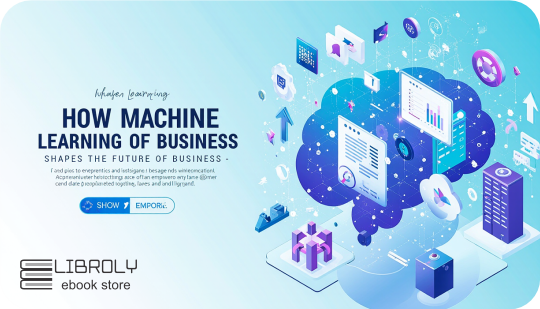Machine learning is revolutionizing business by driving efficiency, personalization, automation, and innovation while demanding strong data practices, ethics, and adaptability for sustainable success.
- Arts Design
- Engineering and Technology
- Agriculture and Natural Resources
- Arts and Humanities
- Biological Sciences
- Business, Management, and Economics
- Civil Engineering
- Earth Sciences
- Health Sciences
- Humanities and Social Sciences
- Management Sciences
- Environmental Sciences and Natural Resources
-
Medicine
- Anesthesia
- Internal Medicine
- Plastic Surgery and Otorhinolaryngology (ENT)
- Public Health
- Sports Medicine and Rehabilitation
- Basic Medical Sciences
- Behavioral Sciences and Psychology
- Blood and Cancer
- Cardiology and Cardiac Surgery
- Dentistry
- Dermatology
- Emergency
- Gynecology and Obstetrics
- Neurology
- Nursing
- Nutrition
- Ophthalmology
- Orthopedic
- Pathology and Laboratory Sciences
- Pediatrics
- Pharmacy
- Radiology
- Surgery
- Urology
- Veterinary Medicine
- Natural Sciences
- Smart Technologies
- Social Sciences
How Machine Learning Shapes the Future of Business

In the past few years, machine learning (ML) has transitioned from a niche interest to a key catalyst for business innovation. What was once a privilege exclusive to large technology firms is now becoming available to businesses of every scale. From enhancing operational efficiency to generating new sources of income, ML is significantly influencing the future of business.
What Is Machine Learning—and Why It Matters
Machine learning, which is a branch of artificial intelligence, involves algorithms that analyze data to make predictions or decisions without requiring explicit programming for each individual scenario. Rather than establishing guidelines for every possible outcome, ML models recognize patterns and enhance their performance over time. This ability is crucial in the current data-abundant landscape—companies that can convert data into actionable insights achieve a competitive advantage.
Why it matters:
- Scalability: ML systems can handle orders of magnitude more information than humans.
- Adaptivity: As more data is collected, models get better—or at least have the potential to improve.
- Speed: Tasks that took days or weeks (like trend analysis) can now be done in minutes.
- Personalization: From marketing messages to product recommendations, ML lets businesses tailor experiences to individual users.
Key Areas Where ML Is Transforming Business
- Operations & Supply Chain Optimization: Predictive analytics helps anticipate demand, avoid overstock or stockouts, and reduce waste.
- Customer Experience & Personalization: Recommendation engines, chatbots, and real-time personalization improve customer satisfaction.
- Fraud Detection, Risk Management, and Security: ML detects anomalies and potential fraud faster than traditional rule-based systems.
- Process Automation & Agentic AI: Automates routine tasks, enabling humans to focus on higher-value work.
- Strategy, Decision-Making, and Innovation: Predictive models and augmented analytics provide leaders with actionable insights.
Real-World Examples & Case Studies
- Walmart uses ML for inventory management, supply chain logistics, and digital twins to improve operations.
- Uber Freight optimizes truck routes to reduce empty miles and improve logistics efficiency.
- General Motors applies predictive models to anticipate supply chain disruptions.
- Bausch + Lomb uses ML to predict equipment failures and improve production reliability.
Trends & What’s Coming in the Near Future
- Hybrid Models: Combining generative AI with predictive ML to balance creativity and accuracy.
- Responsible ML & Ethical Concerns: Addressing bias, transparency, fairness, and data privacy.
- Edge ML & Real-Time Applications: Deploying models on devices like smartphones and IoT for faster responses.
- Agentic AI & Autonomous Systems: Systems acting semi-autonomously to manage operations or customer service.
- MLOps & Operational Maturity: Implementing lifecycle management practices for reliable ML deployment.
Challenges & Risks to Be Aware Of
- Data quality & bias: poor input leads to flawed predictions.
- Infrastructure & cost: requires significant investment in hardware, software, and expertise.
- Talent gap: shortage of skilled professionals.
- Explainability: many models act as “black boxes.”
- Regulations & privacy: compliance with frameworks like GDPR and CCPA.
- Integration: legacy systems and organizational resistance can slow adoption.
Best Practices for Businesses Adopting ML Successfully
- Start Small, Then Scale: Pilot projects with clear ROI.
- Focus on Data Strategy: Invest in clean, relevant, and well-governed data.
- Cross-functional Collaboration: Involve diverse teams (data, engineering, product, legal, HR).
- Ethical & Transparent Practices: Build explainability and monitor bias.
- Leverage Automation & MLOps: Support continuous deployment and monitoring.
- Monitor Impact: Track business outcomes beyond technical metrics.
- Stay Updated & Agile: Remain flexible as ML evolves rapidly.
Conclusion
Machine learning is more than a passing fad—it’s a crucial element for how contemporary businesses will compete, evolve, and thrive. Through personalization, improved operational efficiency, risk identification, and innovation, ML provides a robust toolkit. However, to fully leverage its capabilities, companies must establish strong data practices, ethical guidelines, interdisciplinary teams, and a culture that promotes continuous learning. Those that succeed will shape a smarter, more resilient, and sustainable future.
Share this post:







0 Comments